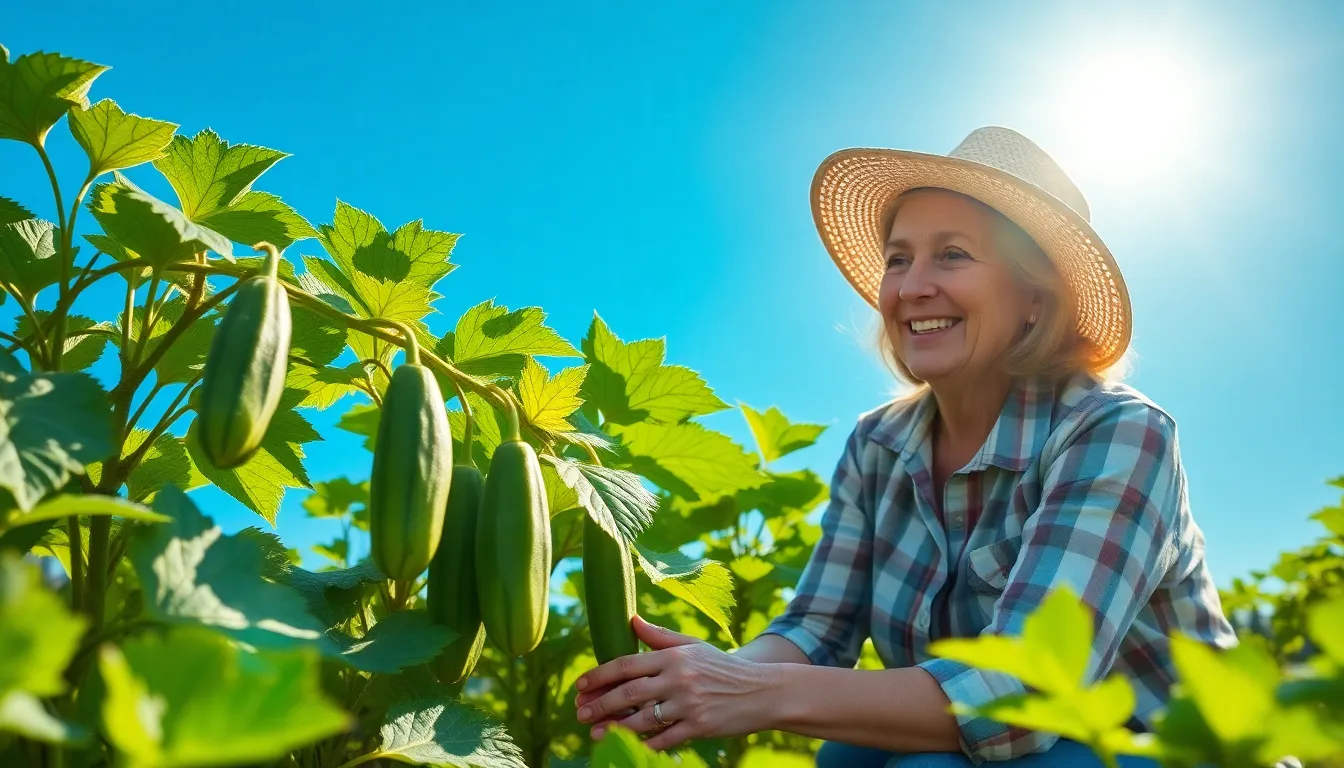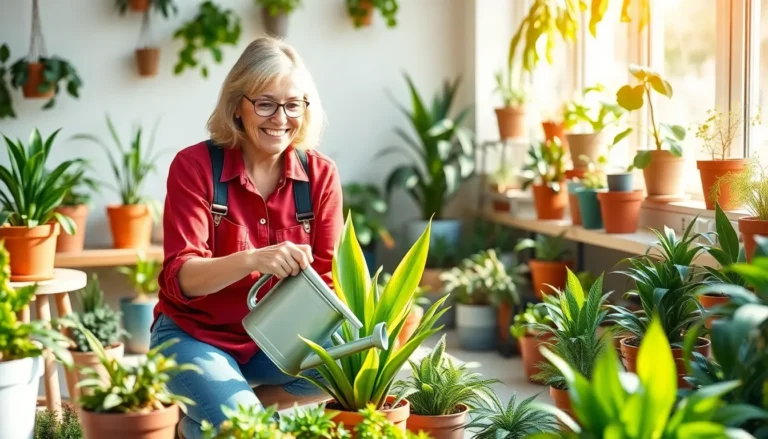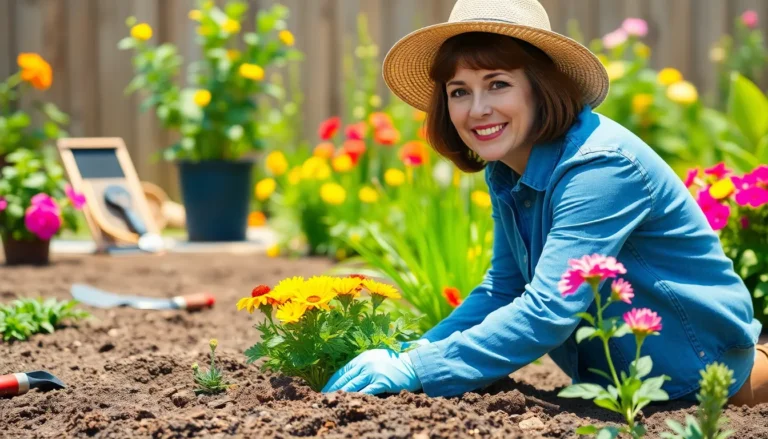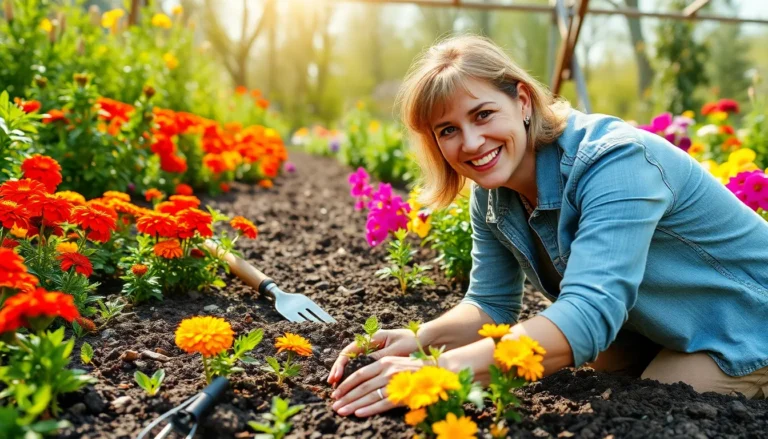Cucumbers are the cool kids of the garden world. They’re refreshing, versatile, and perfect for summer salads or a crisp snack. But growing these green gems isn’t just about tossing seeds in the ground and hoping for the best. With the right tips, anyone can transform their garden into a cucumber paradise that even the pickiest eaters will love.
Cucumber Gardening Tips
Growing cucumbers successfully requires attention to several key factors. This section delivers crucial insights on selecting cucumber varieties and ensuring optimal conditions for growth.
Choosing the Right Cucumber Varieties
Select varieties suited for specific garden needs. For slicing, ‘Marketmore’ and ‘Slicing’ prove popular due to their size and flavor. Pickling enthusiasts often choose ‘Kirby’ or ‘Pickling’ cucumbers for their crunch and small size. Consider growth habits; bush varieties work well in small spaces, while vining types thrive in larger areas. Investigate disease resistance as some varieties resist common cucumber diseases more effectively than others.
Optimal Growing Conditions
Ensure soil conditions support cucumber growth. Aim for well-drained, fertile soil rich in organic matter. Maintain soil pH between 6.0 and 7.0 for optimal nutrient uptake. Cucumbers require full sun, so choose a location that receives at least six to eight hours of daily sunlight. Adjust watering practices, providing consistent moisture without oversaturating the soil. Implement proper spacing; allow at least 36 inches between plants for good air circulation.
Soil Preparation and Planting Techniques
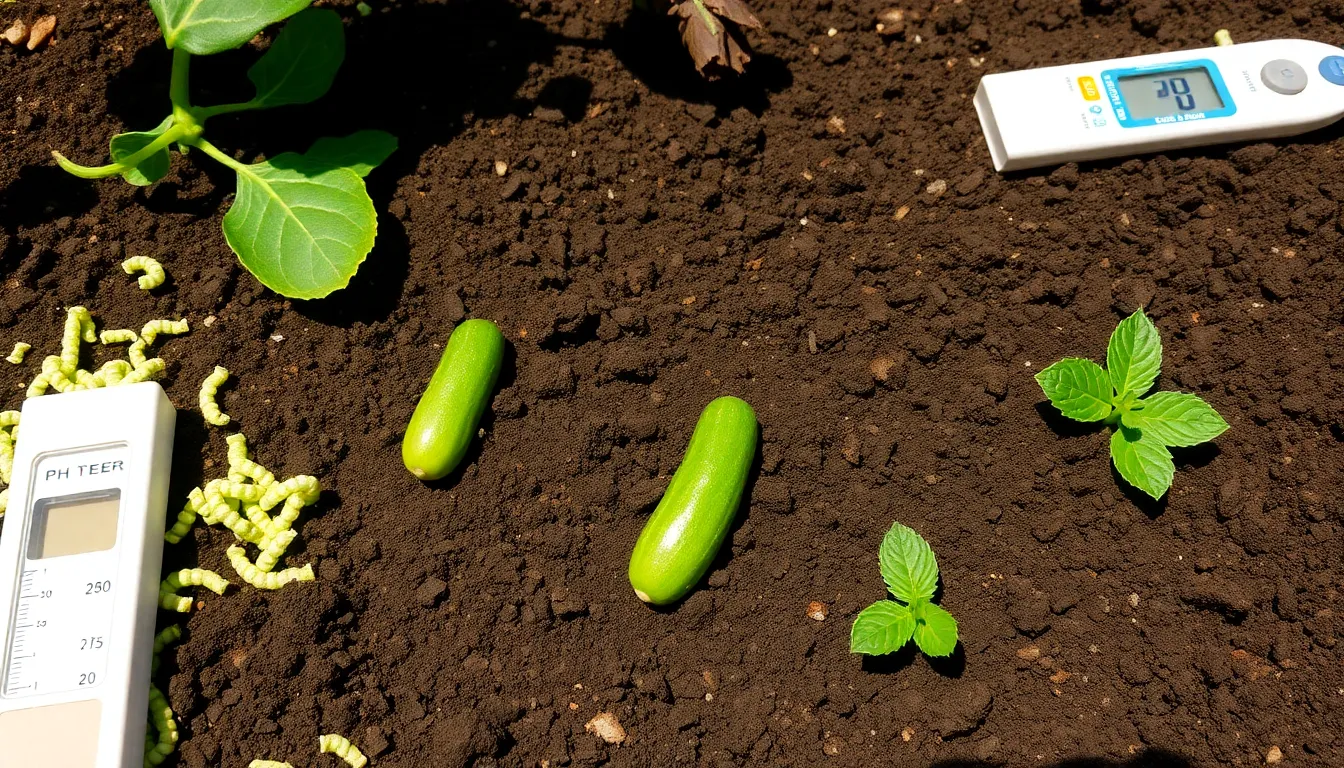
Effective soil preparation sets the foundation for robust cucumber growth. Following specific techniques ensures healthier plants and higher yields.
Soil Testing and Amendments
Test soil using a standard pH kit to determine its acidity or alkalinity. A pH between 6.0 and 7.0 promotes optimal nutrient uptake for cucumbers. After testing, incorporate organic matter like compost or well-rotted manure to enhance fertility. These amendments improve soil structure, allowing better drainage and root development. Fertilizers rich in phosphorus support root growth, while those with potassium increase fruit quality. Regularly monitoring soil conditions maintains an enriched environment throughout the growing season.
Planting Depth and Spacing
Plant cucumber seeds at a depth of 1 inch in well-prepared soil. Proper depth ensures seedlings receive adequate warmth for germination. Space seeds about 12 inches apart within rows, providing room for mature plants. Rows should maintain at least 36 inches of distance to allow for air circulation. Thinning seedlings to the recommended spacing prevents overcrowding, reducing disease risks. Adequate spacing helps cucumbers thrive and fosters sunlight exposure for all leaves.
Care and Maintenance for Healthy Cucumbers
Cucumbers thrive with proper care and maintenance, ensuring robust growth and delicious harvests. Understanding the requirements for watering, fertilization, and pest management makes a significant difference for gardeners.
Watering Guidelines
Watering cucumbers demands consistency and attention. Cucumbers typically need about 1 to 1.5 inches of water weekly, depending on weather conditions. For optimal results, water plants early in the day to reduce evaporation. Ensure soil remains moist but avoid waterlogging, as excess water can lead to root rot. Using mulch around plants retains moisture and suppresses weeds.
Fertilization Strategies
Fertilizer plays a critical role in cucumber growth. Utilizing a balanced fertilizer with an NPK ratio of 5-10-10 promotes flourishing plants and plentiful fruits. Prior to planting, incorporate organic matter into the soil for enhanced fertility. Side-dress plants with a nitrogen-rich fertilizer when they begin to flower, providing crucial nutrients during fruit development. Over-fertilization can harm cucumbers, so following recommended application rates is essential.
Pest and Disease Management
Managing pests and diseases protects cucumbers from potential threats. Common pests include cucumber beetles and aphids, which can damage plants and reduce yields. Implementing crop rotation and introducing beneficial insects, such as ladybugs, offers natural pest control. Fungal diseases such as powdery mildew require prompt action; applying fungicides at the first sign of infection helps prevent further spread. Maintaining air circulation around plants also minimizes the risk of disease.
Harvesting and Storage Tips
Timing plays a crucial role in harvesting cucumbers. When cucumbers reach approximately 6 to 8 inches in length, they indicate readiness. Delaying harvest often leads to bitterness and overdevelopment, which affects taste and texture.
Use a sharp knife or pruning shears for clean cuts. This practice minimizes damage to the plant, allowing it to continue producing. Always harvest in the morning when cucumbers are firm and cooler, ensuring better quality.
Storage conditions directly influence cucumber freshness. Ideal temperatures range between 50 to 55°F, which maintains crispness. Store harvested cucumbers in the refrigerator’s crisper drawer to extend their shelf life.
Wrap cucumbers in a paper towel for better moisture control. Doing so helps prevent excess moisture that often leads to rot. Avoid storing cucumbers near fruits like bananas and apples, as the ethylene gas they produce accelerates ripening.
Inspect stored cucumbers regularly to remove any that show signs of spoilage. This practice helps prevent affecting the entire batch. Consume cucumbers within one week for optimal taste and texture.
Pickling offers an excellent way to preserve excess cucumbers. Prepare jars with a vinegar solution and assorted spices for flavorful pickling. Experiment with flavors by adding garlic, dill, or chili flakes to enhance the taste profile.
Understanding the best harvesting and storage practices enhances cucumber gardening success. By following these tips, gardeners ensure their cucumbers remain fresh and delicious, ready for summer dishes and snacks.
Conclusion
Growing cucumbers can be a rewarding experience for any gardener. With the right tips and techniques in place success is just around the corner. By selecting suitable varieties and providing optimal growing conditions gardeners can enjoy a bountiful harvest.
Proper care and maintenance, including watering and pest management, will ensure healthy plants throughout the growing season. Harvesting at the right time and storing cucumbers correctly will keep them fresh for longer.
Whether it’s for fresh salads or pickling, these tips will help gardeners cultivate delicious cucumbers that everyone will love. Embracing these practices will lead to a thriving cucumber garden that’s sure to impress.

